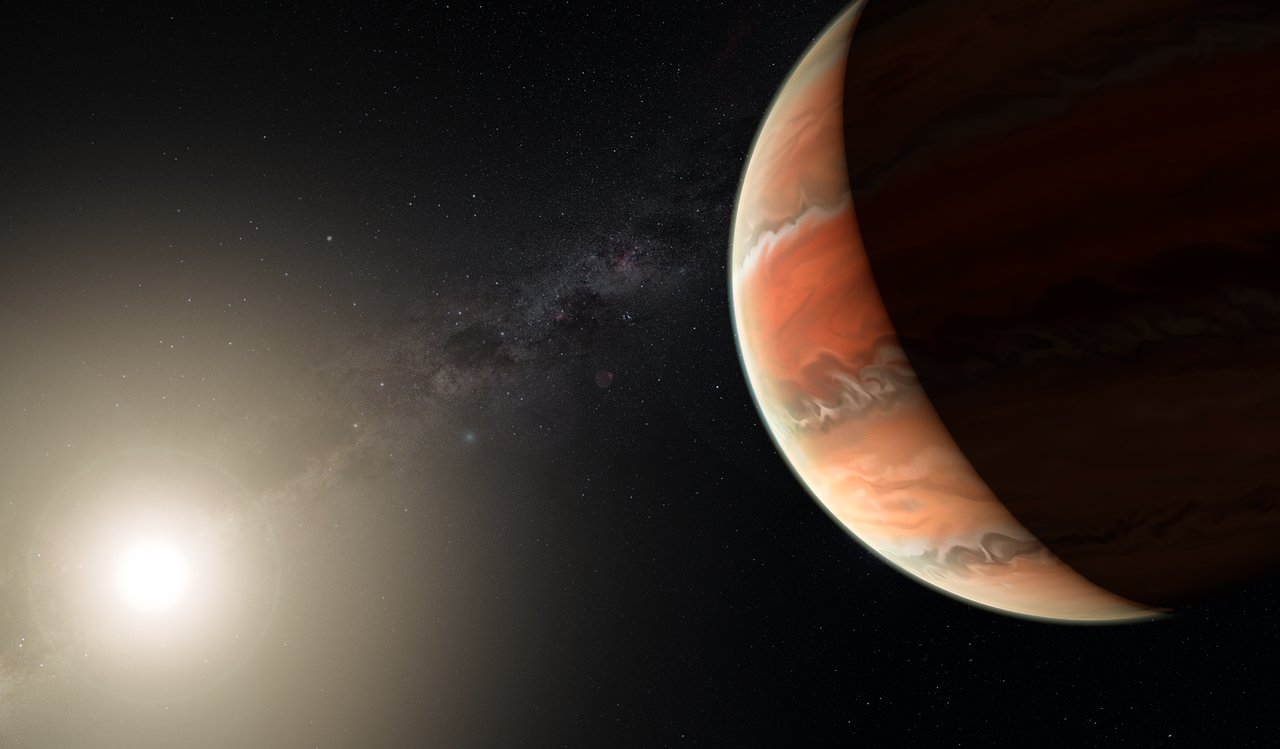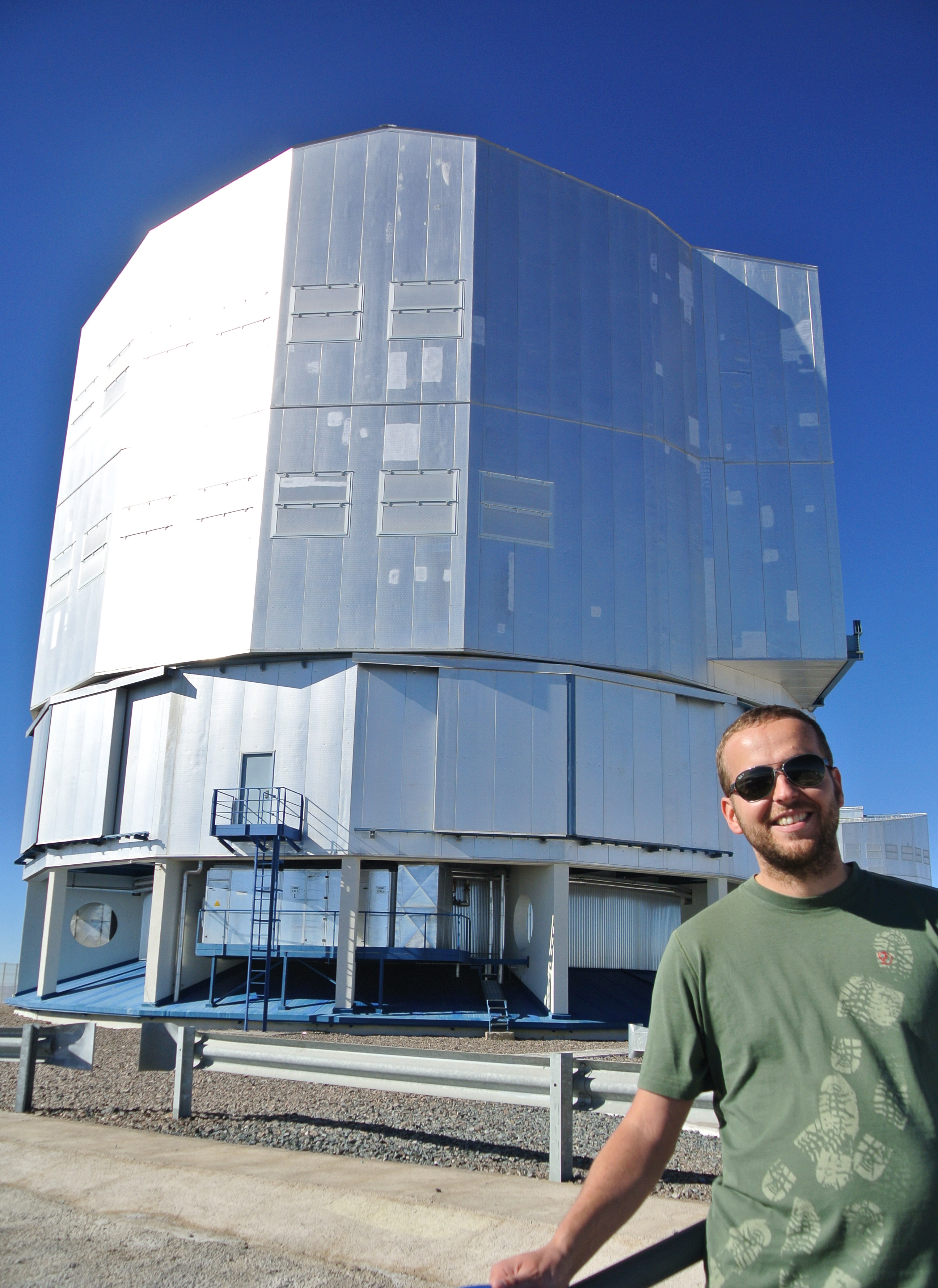
Witnessing the birth of planets
Astronomer Jos de Boer on how he searches for baby planets around young stars
- How and where baby planets are born
- That planet formation is still a mysterious branch of astronomy
- Why baby planets are notoriously difficult to spot
- What it’s like to hunt for baby planets using ESO’s Very Large Telescope
Q. To start off, why do you think it’s important to find out about how planets are born?
A. There are two sides to answering this question. On one hand, it’s easy to take the existence of Earth, the Sun and humanity for granted, but “where did we come from?” is one of the oldest philosophical questions. Finding out how planets are formed tells us something about ourselves and our origins. And of course it’s impossible to go back in time, so looking at other planetary systems that are still in formation might tell us some general rules that we could apply to the formation of our own Solar System.
On the other hand, we want to know where to look for extraterrestrial life. Finding out how planets are born helps us predict how many planets we could expect to find around different star types, where they might be positioned, and whether they might be capable of harbouring life.
Personally, I think that now we know that planets exist around other stars, it should make us more humble as we realise our situation is not that unique, and that maybe we are not alone in this Universe. It might also change the way we look at and treat our own planet, influenced knowing how fragile Earth is and how easily it could have been born incapable of harbouring life, or indeed could evolve into a state where it can no longer support life.
Q. So how are baby planets born?
A. It starts off with a molecular cloud, often aptly called a “stellar nursery”, which is a giant cloud of gas and dust. When disturbed by a pressure wave, parts of the cloud can collapse. The densest part at the centre of a collapsed region becomes a young protostar, and the surrounding material either falls onto or starts spinning around the protostar, flattening until it becomes a dusty disk. Over the following 10 000 years, the star gets brighter and its radiation pushes the gas and dust away until the molecular cloud has dissipated. We are left with a bright star surrounded by a gassy and dusty protoplanetary disk, which is the building material for planets.
The question is what happens within this protoplanetary disk at the moment when the molecular cloud dissipates and we can start seeing it. Are planets already present at this point, or do they form later on?
The hypothesis that a star system starts off as a cloud of gas and dust was first suggested by philosopher Emmanuel Kant way back in the 18th century. Kant already proposed that this cloud would flatten into a disk, which forms the building blocks for planets. This was then later developed into two competing theories: in the first, part of the disk collapses quickly to form a planet, and in the second, a planet grows gradually in a region where the density is slightly larger than elsewhere — starting small and gathering more and more dust and gas until it is a fully-fledged planet. The reality may depend on where in the disk the baby planet is, but we haven’t been able to fully figure this out yet.
Q. It seems like there are still a lot of mysteries surrounding planet formation within protoplanetary disks?
A. Yes, definitely!
There are many possible explanations for why things could happen. We have long-hoped to find a simple explanation for an equally simple protoplanetary disk structure, but now that we can image disks in great detail, we see that their structure is far from simple. As a result, our simple explanations do not suffice.
There are many possible explanations for the structures we see in disks such as cavities, gaps and spiral arms, but no known golden formula for planet formation, for example to explain whether planets form in a specific place or at a specific time in the disk’s evolutionary lifetime. Our Solar System contains rocky planets closer to the Sun and gas giants further out; we thought this might be a general rule, but no, we’ve seen gas giants orbiting close to other stars. At the moment, our theories and observations don’t match and we cannot predict what kind of planetary system will form when we see any particular protoplanetary disk.
Q. You are using the Very Large Telescope (VLT) to uncover the mysteries behind planetary systems. How and why are you doing this?
A. I’ve been involved in using two very unique instruments to look at protoplanetary disks — SPHERE and MUSE, both on the VLT — using a technique called high-contrast imaging. The main difficulty with imaging protoplanetary disks is that you have a very bright star surrounded by a very dim disk, so the starlight floods the entire image and it’s very difficult to see anything else. With high-contrast imaging, we block and remove the starlight to better see the surrounding disk.
SPHERE is a dedicated high-contrast imager that is specialised at removing starlight. It contains a so-called “coronagraph” to mask the starlight before it hits the detector. SPHERE has turned out to be fantastic at spotting protoplanetary disks but not so good at finding planets. For planet-hunting, especially for young systems where light from the disk hampers our detection of planets, MUSE may be more suitable. Disks are naturally quite blobby, so it can be difficult sometimes to know whether we are looking at a planet, a blob of dust, or a bit of residual starlight. MUSE takes a spectrum of light for each point in the image which helps us distinguish whether potential planets have the same spectrum as the central star — in which case it is just residual starlight or a disk blob (which reflects the starlight) — or if it looks different, in which case it’s a planet.
For example, we recently used MUSE to look at a disk SPHERE had already detected (and had found a planet inside!) and MUSE immediately found a second planet. This was fantastic news — the SPHERE detection is the first time a planet still forming in a disk has ever been spotted, and the MUSE detection marks the first time that a system with multiple planets still forming has been found!

Q. Could you tell us more about how you made this discovery? What makes it so exciting?
A. People have claimed to detect planets still embedded in disks before, but the claims are far from certain, and I had very strong doubts about all of them. So when we looked at this protoplanetary disk, PDS 70, with SPHERE last year, and saw something that looked like a planet, I was initially very sceptical, however the data did seem convincing.
But coincidentally, a colleague of mine was testing a new observation mode with MUSE soon afterwards, and needed ideas for stars that would be interesting to try it out with. I suggested PDS 70, just to see what MUSE could do.
With MUSE, we saw specific wavelengths of light in two places in the image, that match the wavelength emitted by baby planets as they accrete matter. At first we thought it might be a bit of leftover starlight, but then we checked and found that the equivalent wavelength of starlight was slightly different to the light from the two potential planets; this suggests that the accreting material at that point is moving with different velocity to that of the star, which rules out the “leftover starlight” theory. So we had confirmed the presence of two baby planets, and could determine the amount of gas accreting onto them!
Q. How often do you get to go to Paranal Observatory and what is it like when you are there?
A. Well I was actually a near-infrared polarimetry specialist for SPHERE, which was installed onto the VLT five years ago. Polarimetric high-contrast imaging takes advantage of light that is scattered by a protoplanetary disk or planet’s atmosphere being polarised in a certain direction; this is the light we see from the telescope and it means that we can separate that light from largely unpolarised starlight. So when SPHERE started making observations in 2014, I went quite often to test the polarimetry high-contrast imaging method. Over time, we’ve got this mode working well and ESO astronomers have got more experience with the instrument, so more and more observations are carried out in “service mode”, where ESO staff astronomers observe on behalf of astronomers around the world. I’ve never been to observe with MUSE though; that’s all been service mode.
Being at Paranal is amazing; I would say it’s one of my favourite places on Earth! The journey there is an adventure in itself — you land in Santiago, and then take another plane to the city of Antofagasta. But then there’s still a bus journey through the mountains to get to the telescopes. The mountains are completely deserted: no trees, no signs of life, nothing! After a couple of hours of driving, the bus finally turns a corner and in the distance you see the plateau at the top of Cerro Paranal, where the VLT stands. If you look in the opposite direction, you see the building site of the Extremely Large Telescope. The bus then stops at the astronomer’s accommodation — the Residencia — which is like a tropical paradise with a very humid atmosphere compared to the dry desert air.
The telescopes are still just under three kilometres away, and the first night you go up is simply incredible. There are people from around the world making different observations. You see ESO astronomers running the telescopes and visiting astronomers waiting for data to arrive. My favourite thing to do is to exit the building from which the telescopes are controlled, and go out to look at the stars. It takes a minute or so for your eyes to adjust but then the sight of the Milky Way stretching across the sky is just magnificent. If you’re very lucky, you see the lasers shooting up from the VLT, which is very, very cool.
Q. During your PhD, you spent two years in Chile as an ESO Student. How did that contribute to where you are today?
A. I stayed mainly in ESO Chile headquarters in Santiago, and went up to the mountain every now and again. Santiago is a hub of activity, with lots of visiting astronomers, lots of talks and lots of interesting discussions. It’s also next door to ALMA Headquarters, which is also full of interesting activity. This all gave me a great insight into what other astronomers are working on.
Whilst there, I became an expert in polarimetric high-contrast imaging, just because I was in the right place at the right time. This changed the path I was on and led me to a lot of the research I do today. There’s also a small and very international astronomical community in Chile, so it’s a great way to get to know astronomers from around the world.
Q. What first got you interested in the origins of planets?

A. When I was choosing my PhD topic, I knew that SPHERE was about to be commissioned. I was really excited by the instrument and liked the idea of spending time in Chile working with it. I also thought it would be interesting to look at protoplanetary disks, which are much easier to detect than planets. Disks are 40% polarised, whereas planets are just a few per cent polarised, so disks are a great target for the polarimetric observing mode. Also, observing disks gives us really beautiful images with a lot of structure. We can say a lot about the system just by looking at the image, which is something I find really exciting!
Q. Earlier this year you won the Olivier Chesneau Prize which is co-established by ESO. What did winning this prize mean to you and how has it enabled you to continue doing great work?
A. It’s a very nice confirmation that my work contributed something to the field! It’s wonderful to have your peers tell you that your thesis was worthy of such a prize. It also gave me some visibility; I went to the awards ceremony, where I presented my work and got some media attention, which brought the research to people who would probably never have seen it otherwise.
Numbers in this article
| 1 | Number of planets that SPHERE found in PDS 70. |
| 2 | Number of planets that MUSE found in PDS 70. |
| 2 | Number of years that Jos spent in Chile as an ESO Student. |
| 3 | Number of kilometres between the Residencia and the VLT. |
| 18 | Kant first hypothesised that a star system starts off as a cloud of gas and dust in the 18th century. |
| 40 | Percentage of disk light that is polarised. |
| 2014 | Year that SPHERE started operation on the VLT. |
| 10 000 | Number of years it takes for a molecular cloud to dissipate. |
Links
Biography Jos de Boer
Jos de Boer is an astronomer at Leiden Observatory in the Netherlands. In 2018, he defended his thesis on “High-contrast imaging of protoplanetary disks”, and has contributed by performing observations, data reduction and analysis of newly detected protoplanetary disks and planets. A full list of his publications can be found here and his Twitter handle is @jozuadeboer.





